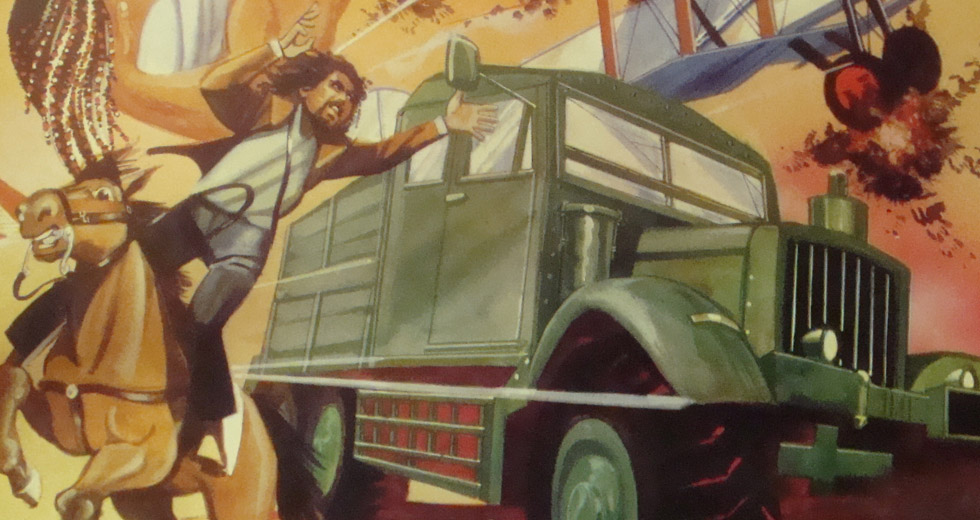Interview: Hip Hop Illustrator Andre LeRoy Davis
The man behind The Source’s The Last Word speaks about his lengthy career
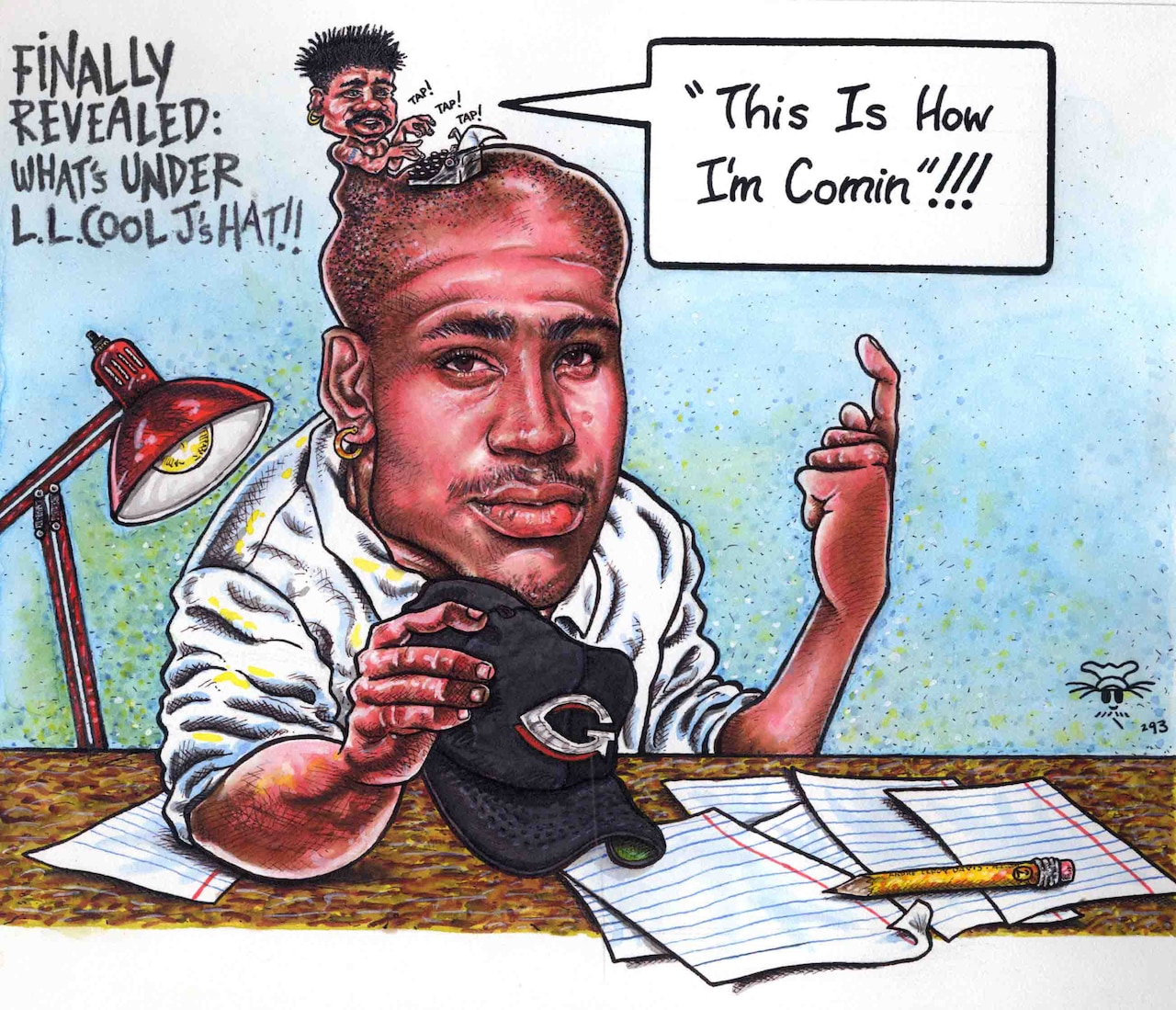
Andre LeRoy Davis is hip hop’s most iconic illustrator. Over a 16 year period that kicked off in 1990, the Brooklyn-based artist’s topical caricatures of rappers, DJs and industry figures held down the closing page of The Source magazine. Titled The Last Word, the strip took a satirical view of the news of the day, with Davis’s images burning themselves into the minds of readers while also often ruffling the feathers of his subjects.
Born and raised in Brooklyn, music and art surrounded Davis from an early age. A soundtrack of soul and funk powered his formative forays into illustrating, until the fateful day he heard a local DJ cutting up two copies of Chic’s “Good Times” at a block party in 1977. That introduction to hip hop became a full on obsession after Davis experienced the sounds of the Fatback Band’s proto-rap track “King Tim III (Personality Jock)” and the Sugarhill Gang’s “Rapper’s Delight.” Looking back, he says, “I was 12 years-old and once I heard someone rhyming to a beat, that became my thing.”
With Davis celebrating 25 years since his inaugural illustration in The Source this year – and also being honored with a solo exhibition at Harlem’s The Art Gallery – here he looks back on his time bringing some smart comic relief to the hip hop scene.
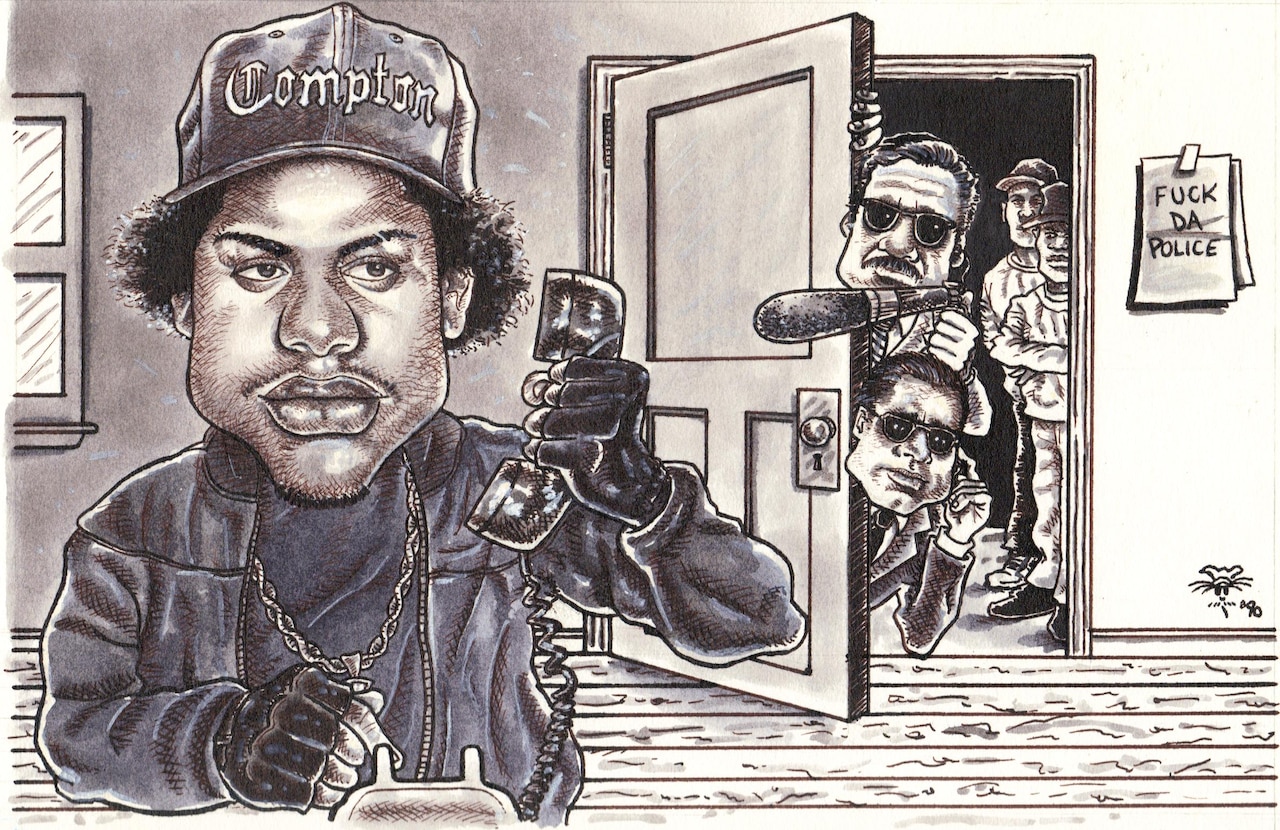
Can you remember the first time you drew a musician?
It was probably Stevie Wonder. I was still in high school. I was already getting my art voice ready – I was always drawing comic books and other people – but it never hit me to draw people I liked like Stevie, Teddy Pendergrass, Rick James, Ashford & Simpson. I remember getting out of school one summer and I started drawing musical performers that I was listening to. Then, in my final year of high school, I started to get into caricatures – I realized that gave me a little more scope – and so I combined caricatures with illustrations.
How did that translate into the gig at The Source with The Last Word?
I had gotten out of school in ‘87 and I was already freelancing for other magazines, but I always wanted to draw something that meant something to me. The normal flow was walking around with your portfolio, dropping into magazines, and looking at newsstands for new titles. This particular day I happened to see this new magazine called The Source – this was 1990 – and I looked in and saw the address and it turned out that they were a block or two away. I walked over there, met with the editor-in-chief, John Shecter, and he told me they were looking to have an illustration to visually convey the whole Eazy-E and FBI thing that was going on at the time. He asked if I could come up with something in two days because the magazine was closing. I drew it, brought it in, and they called me back the next month and told me what was on the cover and I drew that. I thought that was it. But every month they kept calling and it went on for like 16 years.
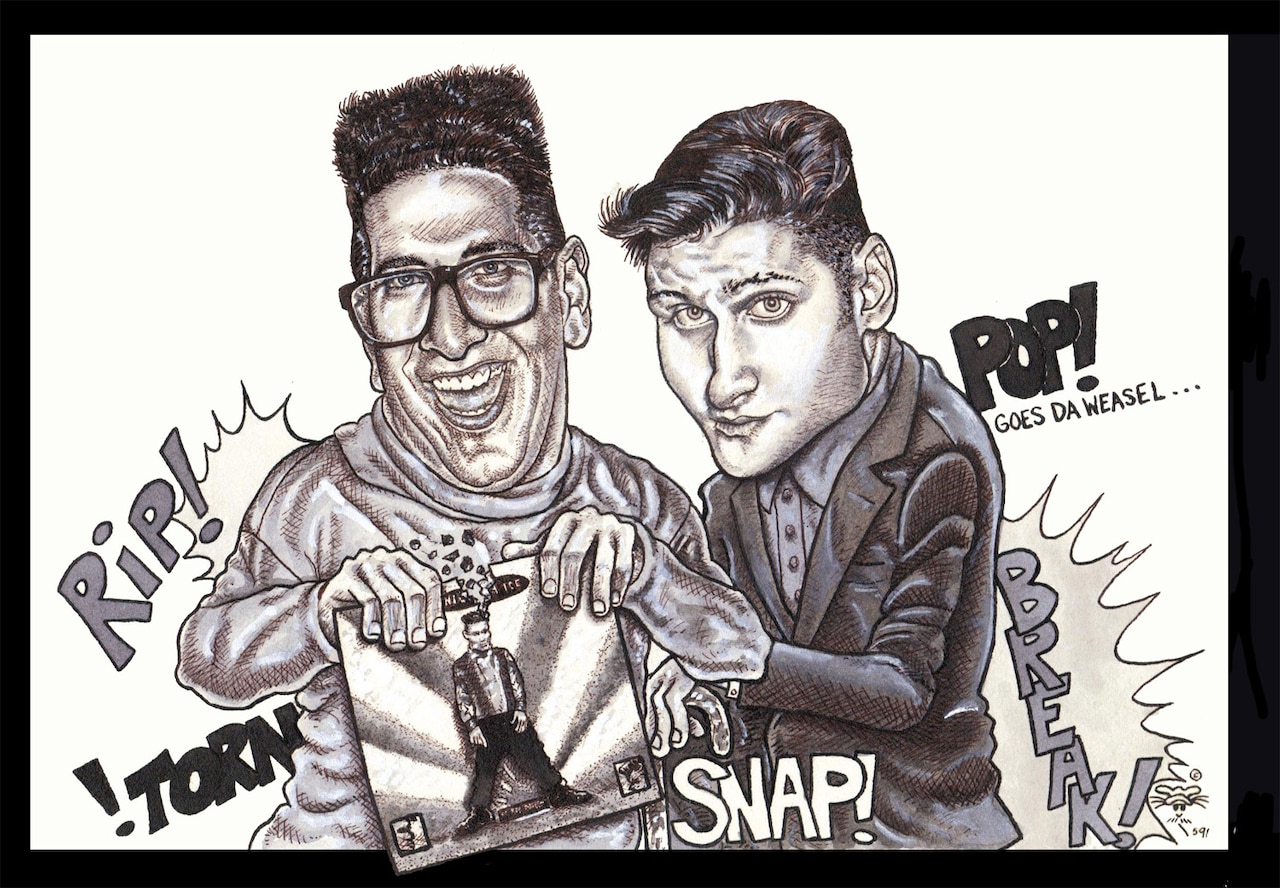
How did you decide who was going to be featured in The Last Word?
The whole thing was, the illustration always wound up being either whoever went on the cover or the secondary story. So let’s say they told me 3rd Bass was gonna be on the cover, I’d come up with two ideas for 3rd Bass and one idea for the secondary story just in case anything happened. I had a tendency to go too far and push the envelope, and I’d sit with the editor and show them the ideas, but they never wanted that one, so they usually picked the one that was less extreme. Once I learned the game, I knew how to get the illustrations that I wanted in the magazine.
How much did you get paid for that first Eazy-E illustration?
It was $50. I think it was only the eighth or tenth issue that was coming out – they were still located in one room in the city and the whole magazine was still in black and white so I knew they had no budget – but for me it was about getting to draw the music.
What was your artistic process like for The Last Word?
During that time period I was a deep hip hop head, so usually I knew what was going on in that MC’s world, so a lot of the times I was already hip to it and that made it easy to come up with the joke. If it was someone I hadn’t heard of too much, I’d do some digging. I remember in ‘93 or ‘94 they wanted me to do an illustration of Master P, and he really hadn’t blown up yet. Usually, I’d hear about an artist and a month later they’d blow up and everybody would know about them. With Master P, they told me he was being called the Ice Cream Man, he wore all white, so I went and listened to the one or two independent CDs he’d put out at that point. I’d do my research so everything was authentic and it wasn’t a stretch.
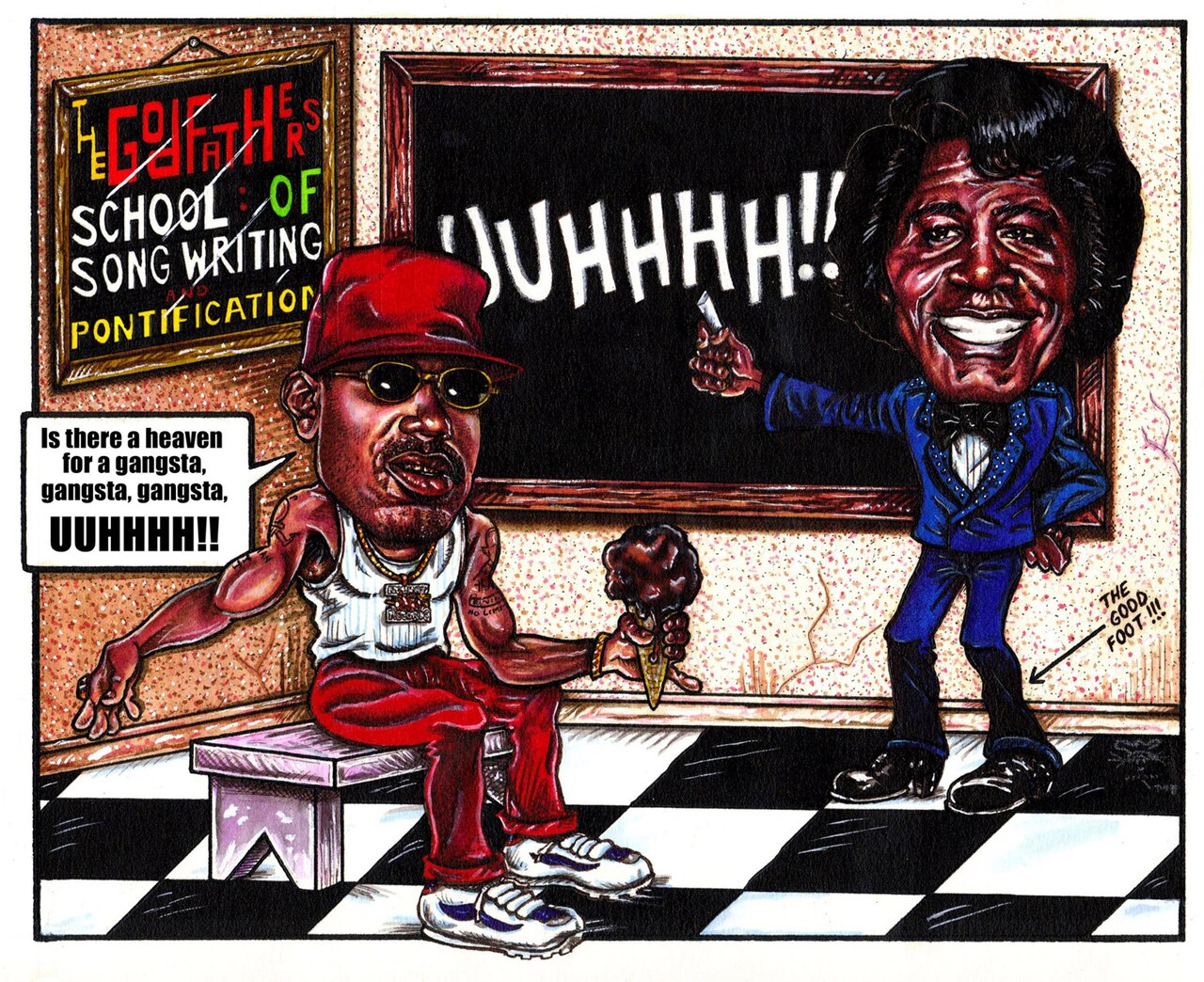
Were any of the strips seen as controversial at the time?
Always! That’s why many of them remained pencil ideas. My whole thing was always taking an artist’s own words – I never really made anything up – and just making those words visually funny. If the artist did something stupid, my way was to bring it to life and pull their card, like let’s bring them back into line. So for every artist, I came up with a bunch of ideas and some were never drawn. I always made it a point to push an idea where it might not get in. I went through eight or nine editors, and they all had their own sensibilities about what they thought was funny and what was too far.
Did you get any negative feedback from the artists when they saw your illustrations?
Definitely! You’ve got to remember, in 1990 in the hip hop world, no one was making fun of the artists, no one was poking at them, no one was pulling their cards – at least not coming from a hip hop culture. You might have someone taking jabs at them from Spin or Rolling Stone, but now you had a magazine totally dedicated to hip hop and here was my column taking jabs at them. In the early stages, a lot of the performers who weren’t used to being drawn and made fun of definitely took offense. I was definitely threatened plenty of times in the early stages, but it still led into them being illustrated as a badge of honor in the later years.
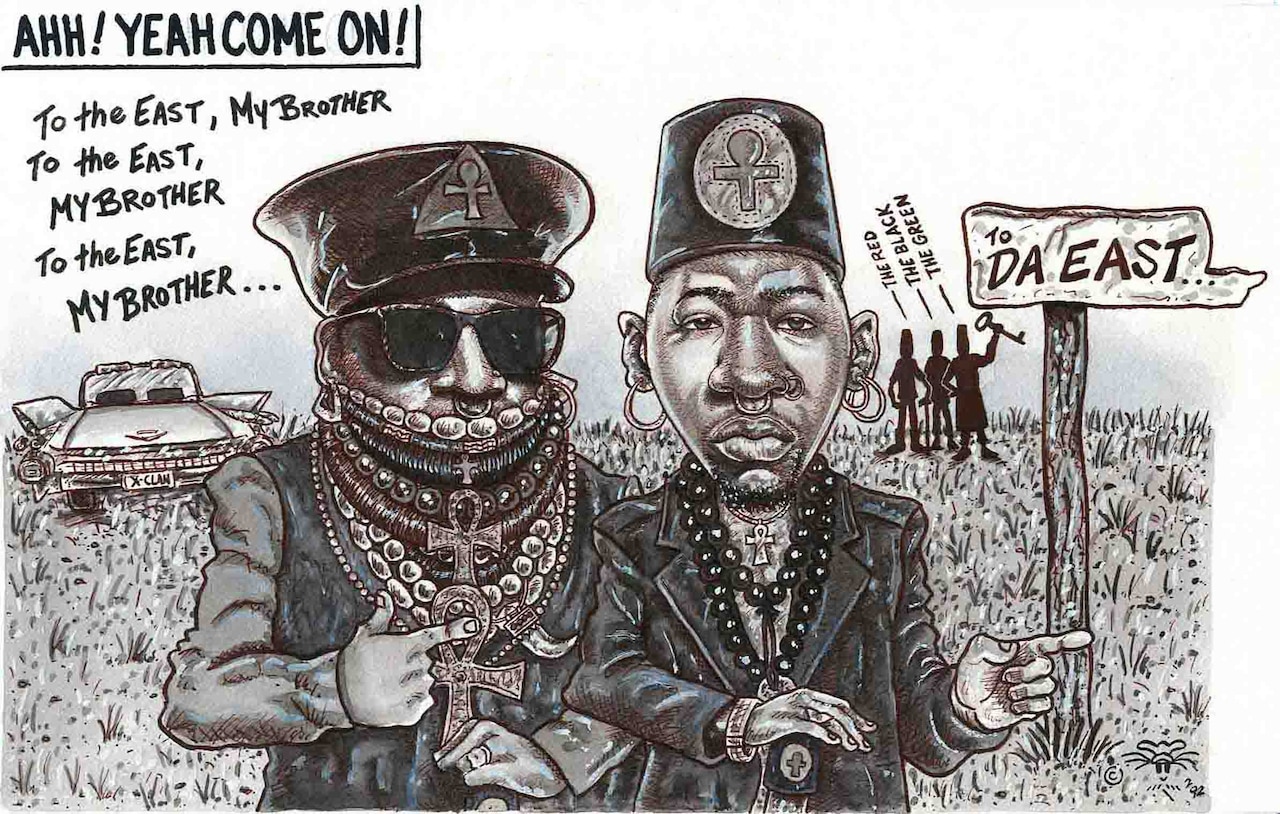
Can you name some of the artists who took offense at your illustrations?
Yeah, I was young then, I don’t mind, you couldn’t tell me anything! I’d come in [to The Source] and they’d be like, “X-Clan is not happy with the illustration.” I’d be like, “Alright, give them my number!” I liked squashing things there and then. I lived in Flatbush, so I’d see X-Clan walking around. It was always better to me to attack your foe right from the beginning. So I let them know who I was, we talked, and it became peace. Then with DJ Quik, I was told not to come to California! But then the funny thing was, he was on an episode of Yo! MTV Raps and [the host] Doctor Dre pulled out a copy of the magazine and turned right to The Last Word and put it in the camera lens. At the time, Quik was mad about it, but Dre was like, “Don’t worry, that just means you’re big, you’re large.”
Were there any rappers you found it hard to get a good likeness with?
There was always somebody who was difficult, but it was really a case of producing The Source so far in advance. So let’s say Nas: There was a lot of talk about Nas being the next Rakim, but at the time they were working on the magazine there really weren’t a lot of pictures of Nas for me to reference and draw. By the time the issue came out, he’d got so hot with his single everywhere, so that was one of the things that I hated because my thing was catching likenesses and being as accurate as possible. So like with Big Pun, for the first illustration of him, there wasn’t really photos so I had to use what I could find; the illustrations weren’t up to my standards because I didn’t have a photo reference. It wasn’t like now where you can go online and just Google thousands of pictures. Back then you had one publicity photo and it was terrible and that was the one I had to draw!
Which artists did you have the most fun drawing?
It was the consistent people through the years like a Diddy or Ice Cube or LL Cool J. With those artists, you knew that every two years they’d come out with an album and they’d be on the cover of The Source. It wasn’t like a Grand Puba, who I only drew once. With an LL who came out with an album so many times, I wound up drawing him four or five times through the 16 years. The same with Big Daddy Kane. By the time I was working with The Source in the ‘90s, he wasn’t getting on the cover because his profile wasn’t like it was back in ‘87 or ‘88.
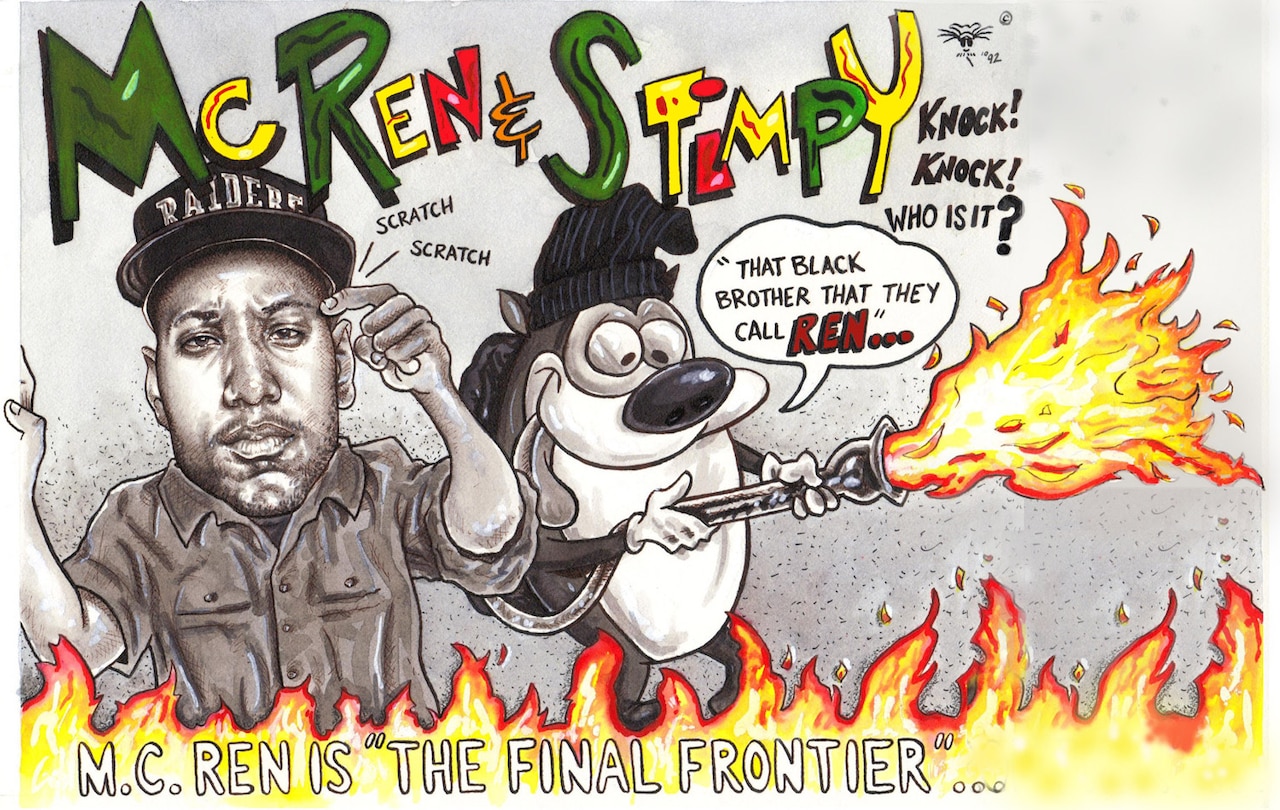
Did you ever have artists pleading with you to draw them?
I would say yes, as the ones that made the magazine were never my choice, so I had artists reach out afterwards. One of the first artists who reached out and got my number and wanted a Last Word-type illustration was MC Ren. Back then he had the video for “The Final Frontier” out, so I came out with my interpretation and I called it MC Ren and Stimpy. I finished it, for some reason we lost contact, and there was a period with The Source where they had to switch it up and I happened to have a finished MC Ren illustration that was for his personal use, but it wound up appearing in the magazine instead.
I also had people reach out wanting to buy The Last Word when they were in it. I remember Naughty by Nature’s people reaching out when they were in it. But some people weren’t willing to pay what I wanted, so I kept them. I wound up keeping all of the Last Words, and I made it a point to retain all ownership of all artwork which turned out to be pretty smart.
Did you include any hidden references or messages in any of the illustrations?
Always! I remember there was a Ja Rule I drew as a rap singer and he was holding the mic and playing the Eddie Murphy song “Party All the Time.” Back in the day rappers would wear their jeans a little bit low – not like today where it’s all the way low – and they would show a little top of the underwear, so you’d see the Karl Kani logo or whatever. Slick Rick was in jail at the time, so where the Karl Kani logo would be I’d written “Free Slick Rick.” There’s little gems like that in a lot of them, like when there’s a lot of background detail I might have someone holding a little sign. [pauses] There’s also one where I was breaking up with a girl and I wrote “Your loss” as a message to her! It was an illustration where I did Nas as a baby for God’s Son. If you look at the CD there’s the comment hidden in there...
